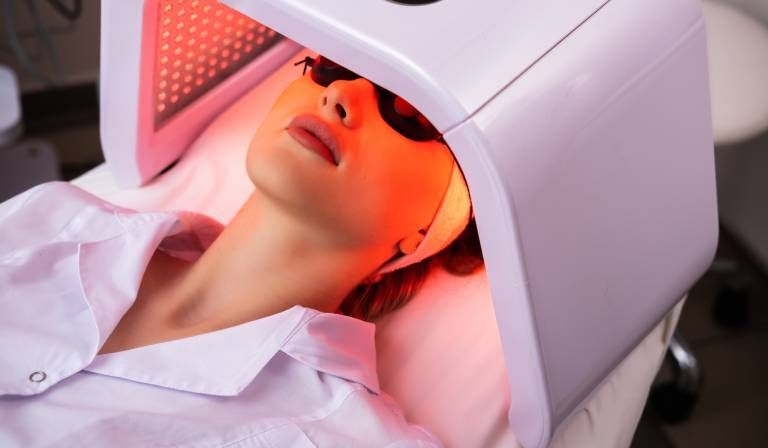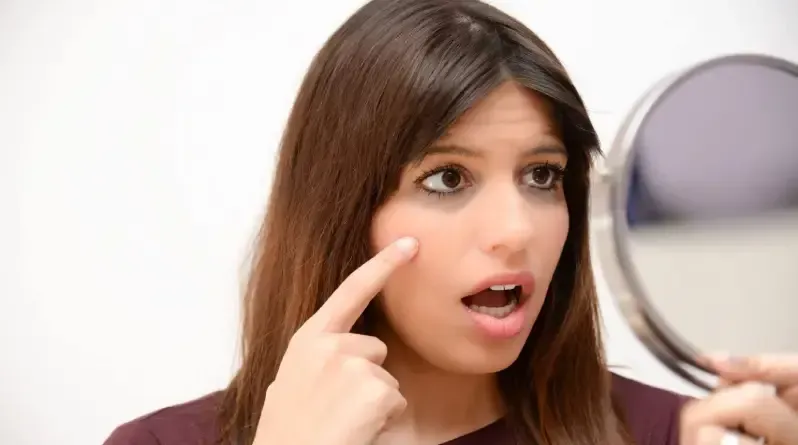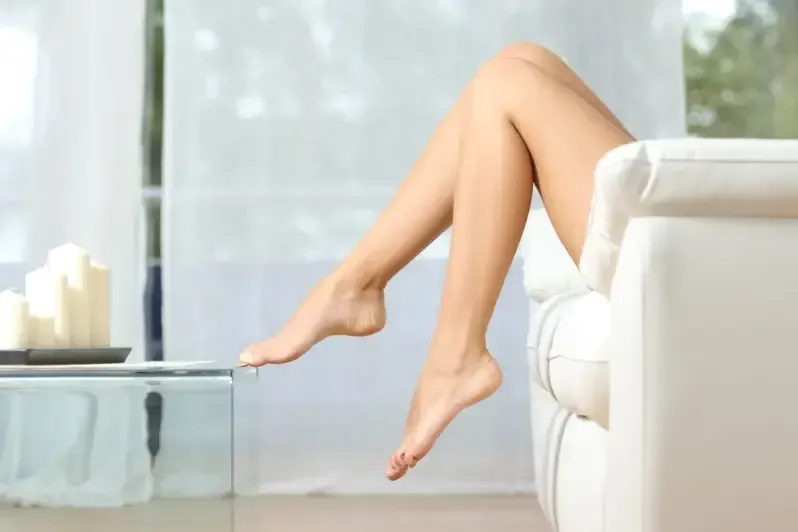Demystifying LED Light Therapy and Its Benefits

Are you tired of dull skin? LED light therapy might be your answer! This innovative treatment uses different colors of light to target wrinkles, acne, and inflammation, all without needles or chemicals. LED therapy can leave your skin looking smoother, clearer, and more radiant by stimulating collagen production and reducing bacteria.
How does it work, and is it right for you? Read on to dive deeper into the science behind LED light therapy and discover the path to a brighter, healthier you!
What is LED Light Therapy Treatment?
LED therapy involves the use of specific wavelengths of light that penetrate the skin at different depths. This non-invasive approach delivers light energy to the skin's layers, triggering cellular responses that boost collagen production, reduce inflammation, and combat acne-causing bacteria.
While primarily known for its anti-aging and blemish-clearing effects, LED light therapy also shows promise in managing conditions like eczema and psoriasis. Though generally safe,
consulting a licensed professional before treatment is recommended to ensure suitability and discuss potential risks.
Are There Different Kinds of LED Light Therapy?
Absolutely! LED light therapy utilizes various wavelengths, creating different benefits based on how deeply it penetrates the skin.
Here's a breakdown of the main types:
- Blue light (405-495 nm): Targets the surface layer, primarily used for acne by reducing oil production and killing bacteria.
- Red light (620-750 nm): Penetrates deeper, stimulating collagen production for anti-aging and potentially aiding in wound healing.
- Near-Infrared Light (750-850nm): Goes deepest, promoting cell regeneration and potentially reducing pain and inflammation.
- Green light: Balances skin tone and potentially helps with hyperpigmentation.
- Other colors: Less common, but options like yellow and orange might target rosacea or psoriasis.
Does Led Light Therapy Actually Work?
While LED light therapy offers potential benefits for acne, wound healing, and even anti-aging, its effectiveness depends on the specific condition and treatment type. Research supports positive outcomes for some aspects, like blue light reducing acne bacteria, but individual results and treatment quality can vary. Consulting a licensed professional is crucial before trying LED therapy, especially with underlying skin concerns. Remember, consistency and professional-grade devices are vital for maximizing potential benefits.
What Doesn’t Led Light Therapy Treat?
Despite showing promise for specific skin concerns, LED light therapy has limitations and isn't a miracle cure.
Here's what it doesn't treat:
- Deep-seated skin issues: It can't reach deeper structures to address problems like cysts, blackheads, or severe wrinkles.
- Underlying medical conditions: It doesn't treat medical conditions causing skin issues, like hormonal imbalances or allergies.
- Unrealistic expectations: It won't deliver dramatic, instant results, and individual responses vary.
- Serious health concerns: Consult a doctor for anything beyond mild skin concerns or pain, as LED therapy isn't a substitute for professional diagnosis and treatment.
Remember, it's not a one-size-fits-all solution, and managing expectations and seeking professional guidance is crucial for safe and effective use.
How Long Does It Take for Led Light Therapy to Work?
Seeing results from LED light therapy takes patience and consistency. While initial improvements might appear within weeks for conditions like acne, significant changes often require 8-12 weeks of regular treatments. The speed also depends on factors like the targeted condition, treatment type, individual response, and device quality.
Ultimately, consult a licensed professional for personalized guidance on expected timescales and optimal treatment plans.
Who Should Not Have Led Light Therapy?
While generally safe, LED light therapy isn't suitable for everyone.
Here are some key groups who should avoid it:
- People taking photosensitizing medications: These medications increase light sensitivity, potentially causing adverse reactions. Examples include Accutane (isotretinoin) for acne, lithium for bipolar disorder, and some antibiotics.
- Individuals with certain eye conditions: Conditions like macular degeneration and retinitis pigmentosa can be worsened by light exposure.
- Pregnant or breastfeeding women: Research on safety in these groups is limited, so avoiding it as a precaution is recommended.
- People with a history of skin cancer: Consult your doctor, as light therapy might trigger cancer recurrence.
Those with active skin rashes or severe inflammation: This could worsen existing conditions.
What Are the Benefits of Led Light Therapy Treatment?

While LED light therapy shows promise for various concerns, it's essential to understand its limitations and individual variability.
Here's a breakdown of its potential benefits and key points to remember:
1. Acne
- Benefit: Blue light targets bacteria (P. acnes) responsible for acne, reducing inflammation and breakouts.
- Key points: Effectiveness varies, often requiring consistent treatment for 8-12 weeks. It is not a substitute for professional dermatological care.
2. Aging
- Benefit: Red light stimulates collagen production, potentially improving fine lines and wrinkles.
- Key points: Results are gradual, and individual responses differ. It is not a complete anti-aging solution; consider it a potential tool alongside other strategies.
3. Wound Healing
- Benefit: Red and near-infrared light might accelerate tissue repair and healing times.
- Key points: More research is needed to confirm effectiveness for all wound types. Consult a doctor for wound management, not solely relying on LED therapy.
4. Hair Loss
- Benefit: Red light therapy may stimulate hair growth in some cases of androgenetic alopecia (male/female pattern hair loss).
- Key points: Evidence is emerging but needs to be more conclusive. Seek professional diagnosis and discuss treatment options with a doctor or dermatologist.
5. Psoriasis
- Benefit: Red and near-infrared light might reduce inflammation and improve symptoms in some individuals with psoriasis.
- Key points: Not a cure; consult a doctor for diagnosis and discuss all treatment options available.
6. Skin Cancers
- Benefit: Photodynamic therapy, using specific LED light with photosensitizing drugs, is used for treating certain skin cancers under medical supervision.
- Key points: This is a complex medical procedure requiring professional expertise and is not a DIY option. Never attempt self-treatment for skin cancer.
Remember, LED light therapy is not a magic bullet. Consult a licensed professional to discuss its suitability and potential benefits for your specific concerns. Manage expectations, prioritize professional diagnoses and treatments, and be patient for gradual improvements.
What Are the Risks of Led Light Therapy?
While generally considered safe, LED light therapy does come with some potential risks to be aware of before trying it:
- Redness: This is the most common side effect, typically appearing as mild flushing or pinkness, especially on sensitive areas like the face. It usually subsides within a short time (hours) after treatment.
- Swelling: In some cases, you might experience slight swelling, particularly if you have sensitive skin or use the device for longer than recommended. It's important to monitor the swelling and stop using the device if it worsens or persists.
- Itching: Mild itching may occur, especially if you have dry or irritated skin. Using a moisturizer after treatment can help alleviate this symptom. If the itching is severe or persistent, discontinue use and consult a doctor.
- Dryness: Some individuals might experience temporary dryness after using LED therapy. Using a gentle moisturizer regularly helps counteract this and maintain healthy skin hydration.
What Is the Recovery Time After Led Light Therapy?
The good news is that LED light therapy requires no recovery time! Unlike procedures that cause skin damage, this non-invasive treatment allows you to resume your regular activities immediately after your session. However, remember to be extra sun-safe for 48 hours afterward and wear SPF to protect your skin. Just remember, consistency is key for seeing results, so keep up with your treatment schedule for optimal benefits!
Where to Get LED Light Therapy?
Whether you seek professional expertise or at-home convenience, LED light therapy options exist.
Consider:
- Dermatologist: Most effective but pricier.
- Spa/Salon: Convenient but quality varies.
- At-home device: Affordable but research quality brands.
Remember, individual needs and budget matter most. For expert guidance and medical-grade equipment, check out
Tala Wellness Studio in Summerville, SC. They offer diverse
LED therapy treatments tailored to your needs.











